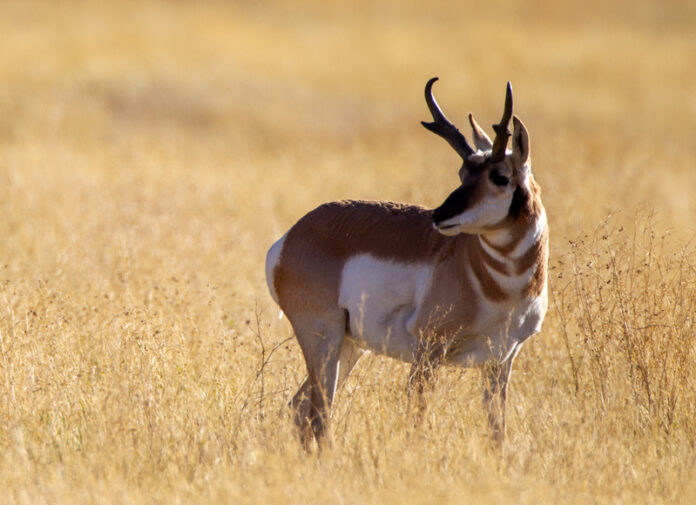with Russell Graves
“Two minutes after I started blowing on a predator call, I saw movement to the northeast of the cedar tree in which I’d purposefully hidden at its base. In an instant, a sleek coyote took a step into a clearing where I’d hoped one might and glared in my direction. Everything I planned to make this moment happen was unfolding twenty yards away: a predator was standing in the burnished-orange bluestem in perfect afternoon lighting and stood there long enough for me to focus on him and squeeze the shutter button. I managed to capture two frames of 35mm slide film and then he was gone. My heart gyrated in my chest at a pace swift enough for me to take notice.” Russell Graves
In that instant, I took my first really good wildlife image. While a litany of adjectives is adequate to describe my elation, exhilarating (while overused) is the most apropos. While the scene is nearly three decades old, it still plays clear in my mind. It was one of the personally defining moments to which life often pivots, hence setting in motion a series of events that would allow me to eventually earn my living with a camera.
Here’s the thing, though: Initially I didn’t know the image was that good. In the days before digital photography, I had to finish the roll of film, send it to a far-off lab, and wait for the images to return. A couple of weeks passed, and I looked through the cardboard-mounted slips of film and found the images of the coyote.
At first, I thought someone else’s pictures were slipped in with mine as they looked that good. But I soon realized that the slides illuminated by the light table were indeed mine. At that moment in the Northeast Texas wild, everything I’d ever learned about how to make an engaging wildlife photo clicked together at once…. and I’ve been blessed ever since.
A lot has changed since that seminal moment in Fannin County. I am blessed to be able to travel the world and shoot photographs for a variety of clients. A few years after the coyote stepped in front of my lens, digital photography revolutionized how images are made and democratized the medium to the point that the best equipment made is now available to the masses at affordable prices.
One thing hasn’t changed, however. Wildlife is still wild, and the steps needed to make great wildlife images remain unchanged with time or technology. Ready to up your game? Here are a few time-tested techniques to make sure your wildlife images are engaging and dynamic.
Focus on the Eyes – You’ve heard the old saying that the eyes are the windows to the soul, right? With wildlife, that trite phrase holds. When shooting a picture of any kind of wildlife pay close attention to the eyes. Many of today’s newer cameras have an eye-tracking feature that can automatically detect an animal’s eye and ensure that the focus is locked accurately.
The reason the eyes are of utmost importance is simple: when you look at another person or an animal the first thing, you’ll typically look at are the eyes. The eyes help us connect to our subject. If the tail is out of focus, that’s okay. Blow the focus on the eyes, however, and the image suffers.
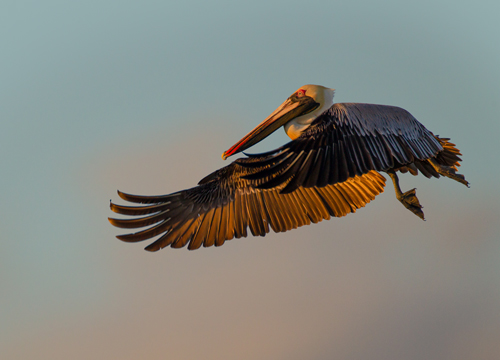
Get Close – There’s a popular misconception among non-photographers that wildlife photographers use giant lenses and stand hundreds of yards from their subject to get quality photographs. Nope!
To get really good pictures of any kind of wild animal you have to get relatively close. For bigger animals like deer, I like to be within 50 yards of them for optimal results. On smaller animals like quail or other small birds, I try to get within a few feet of them for best results.
I guess it’s possible to use extreme telephoto lenses to get optically closer, but that fact is, the more air you shoot thorough, the less sharp your images will be. Since air is filled with particulates like dust, things tend to get optically “soft” the further away they are. That’s why distant objects always look hazy. Therefore, it’s a good practice in wildlife photography to figure out how to get as close as you can.
I do this in a variety of ways. Places like state and national parks work well because the animals are accustomed to seeing people and don’t often flee when they see a photographer. If I am working with truly wild animals, I’ll incorporate blinds into my setup. I often tell people to think like a hunter and use the same tools hunters use to your advantage to get close to wildlife.
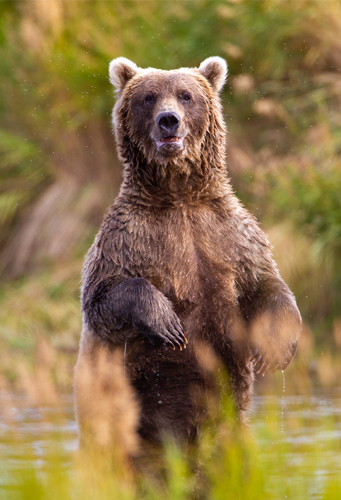 Learn as much as you can about the animal you are photographing – I have an opportunity to speak to groups about wildlife photography and one of the lessons I try to impart concerning wildlife photography is try to control all of the variables until the point comes that you can’t control them anymore — like whether or not wildlife will show up to be photographed. In other words, learn how to use your camera, learn composition, and learn the craft of photography. The fundamentals of photography are some things you can control. You cannot, however, control wildlife and their movements.
Learn as much as you can about the animal you are photographing – I have an opportunity to speak to groups about wildlife photography and one of the lessons I try to impart concerning wildlife photography is try to control all of the variables until the point comes that you can’t control them anymore — like whether or not wildlife will show up to be photographed. In other words, learn how to use your camera, learn composition, and learn the craft of photography. The fundamentals of photography are some things you can control. You cannot, however, control wildlife and their movements.
To help mitigate the last point, I am an advocate of learning all you can about wildlife, nature, and the species you wish to photograph. By being a student of the creative craft of photography AND a student of wildlife, you’ll have an understanding of camera operations and when the most likely times and places you’ll likely see a particular species.
For example, if you want to photograph mule deer in the rut you’ll have to good understanding of where to find mule deer, what kinds of habitat they prefer, and when is the most likely time, you’ll find them exhibiting rutting behavior.
By understanding all you can about your subject, you can’t guarantee you’ll always see your target species on a photography trip, but you can tip the odds in your favor.
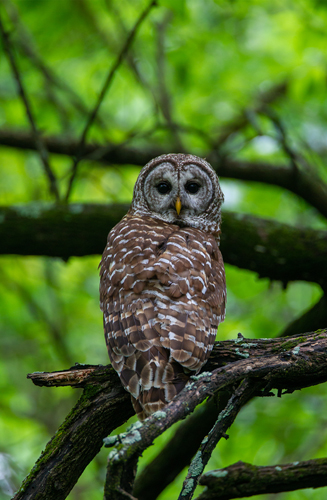 Think about composition – Great photographs (like great art) rely on composition. Simply, composition is the arrangement of the elements in a photograph in a way that is visually balanced and visually pleasing. Typically, with wildlife, that means shooting them vertically or horizontally and relying on the compositional rule called the rule of thirds (that concept is worth a Google). The rule of thirds is a basic guide for where the main interest points in an image should lie within the frame. In other words, this rule discourages centering the subject in the frame.
Think about composition – Great photographs (like great art) rely on composition. Simply, composition is the arrangement of the elements in a photograph in a way that is visually balanced and visually pleasing. Typically, with wildlife, that means shooting them vertically or horizontally and relying on the compositional rule called the rule of thirds (that concept is worth a Google). The rule of thirds is a basic guide for where the main interest points in an image should lie within the frame. In other words, this rule discourages centering the subject in the frame.
Lighting is a key element of the photograph – Perhaps the most key element of a good wildlife photograph is how it’s lit. Natural light looks best during the first and last couple of hours of the day. When the sun is low on the horizon, shadows fall away from the subject and the color cast of sunlight takes on a warmer glow than during the middle of the day. So I always encourage people to concentrate their efforts during the beginning and end of the day and use the middle of the day to eat lunch and look at the pictures you shot in the morning or scout for afternoon opportunities. Coincidentally, early morning and late afternoon is a time when wildlife becomes most active.
But what if it’s overcast? Overcast days are great because the soft, non-directional light extends your shooting day. I actually prefer to photograph on overcast days.
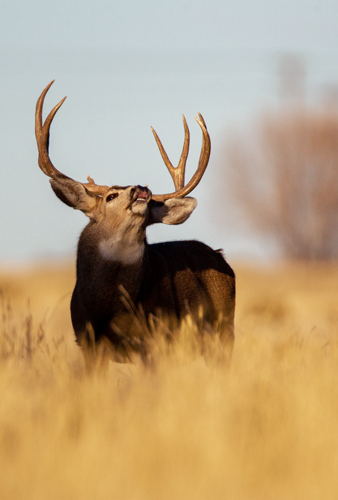 Don’t overthink it – In the end, don’t make things too complicated. Like riding a bicycle, photography requires the master of a few basic fundamentals and doing the same thing over and over again so that your results come predictable. Today’s digital cameras are capable of performing many functions, but the truth is, a thorough understanding of how aperture, shutter speed, and ISO works is just about enough to make some memorable photos.
Don’t overthink it – In the end, don’t make things too complicated. Like riding a bicycle, photography requires the master of a few basic fundamentals and doing the same thing over and over again so that your results come predictable. Today’s digital cameras are capable of performing many functions, but the truth is, a thorough understanding of how aperture, shutter speed, and ISO works is just about enough to make some memorable photos.
I often compare wildlife photography to golf. The top golfers in the world play the game knowing they can never be perfect at it. Top photographers do the same thing. It is the pursuit of the perfect shot that is infectious and keeps people like me heading afield.
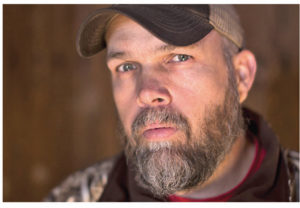 If you’ve read any Texas-based magazines over the past twenty-five years chances are you’ve seen some of Russell’s photos or read some of his words. Since 1989, he’s been traveling the state telling authentic Texas stories with his camera and his words – both written and spoken. A graduate of Dodd City High School and East Texas State University, Russell was an ag science teacher in Childress, Texas, for 16 years where he was named Texas Agriscience Teacher of the Year on three occasions.
If you’ve read any Texas-based magazines over the past twenty-five years chances are you’ve seen some of Russell’s photos or read some of his words. Since 1989, he’s been traveling the state telling authentic Texas stories with his camera and his words – both written and spoken. A graduate of Dodd City High School and East Texas State University, Russell was an ag science teacher in Childress, Texas, for 16 years where he was named Texas Agriscience Teacher of the Year on three occasions.
After leaving that career in 2009, he continued to photograph, write, and speak about his experiences and the people he meets and in 2010, he began delving into television production. His first documentary film, Bois d’Arc Goodbye was filmed entirely in Fannin County and chronicled his and his brother Bubba’s canoe journey as they traversed the creek before a lake forever changes the landscape. The film aired three times to a prime-time, national audience.
He’s worked with such celebrities as the Robertson Family from Duck Dynasty television show, T. Boone Pickens, Dale Earnhardt Jr., Pat Green, and Tracy Lawrence, but he insists that regular people are his favorite subjects. Recently, Russell’s focus has pivoted to leading educational photo tours. In addition, he’s turned his attention to writing two new books that should be released in 2020. Currently, Russell lives in the country north of Dodd City, Texas, with his wife Kristy and their two children Bailee and Ryan. He spends a considerable amount of time creating content for clients but still finds his passion in working and developing the land.



